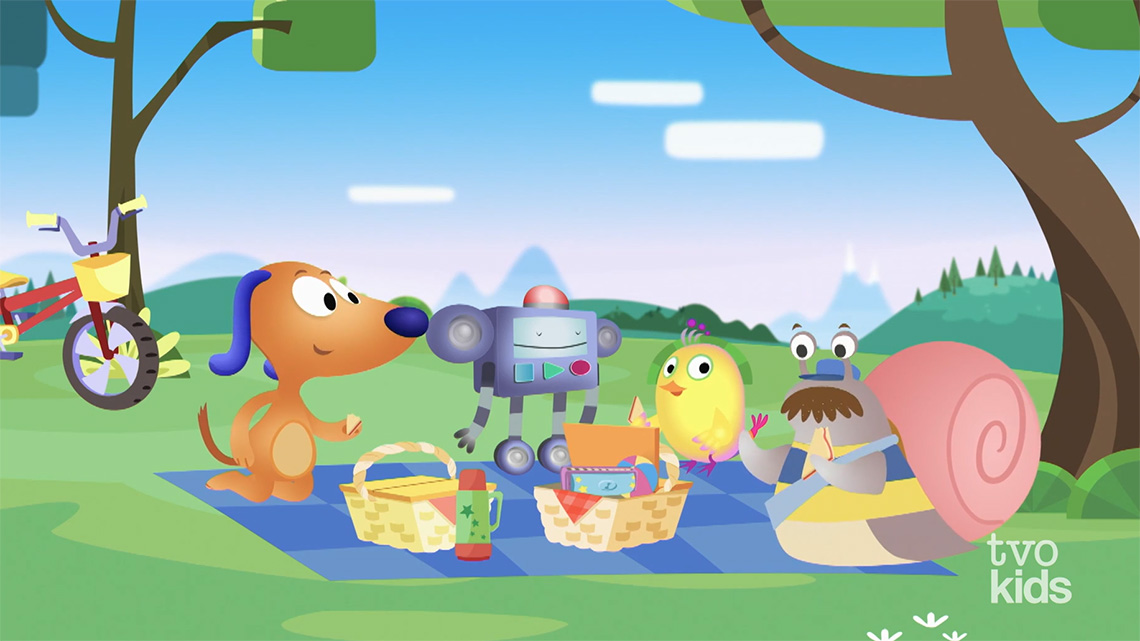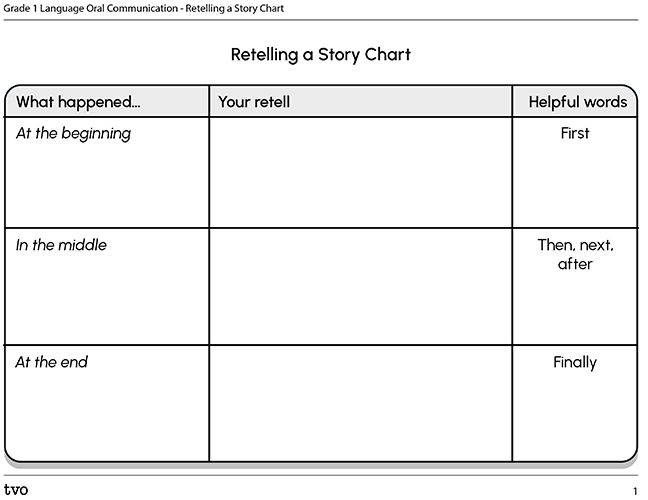Minds On
What’s the order?
The following are three scenes. Place the scenes in the correct order from beginning, middle, and end.
Reflect
After you have ordered these three scenes correctly, think about the following questions and discuss your ideas with a partner, if possible.
- Why do you think this is important to have them in this order?
- Would it makes sense in another order?
- How does our retelling need to be organized in order for our audience to understand
Action
Retelling stories
Retelling stories in order can help others to understand what really happened. We can retell a story by:
- finding the key details (such as characters, setting, and main events)
- sequencing (retelling in order of the beginning, middle, and end)
When we retell using the beginning, middle, and the end, it helps to share the story in order and make sense. If you start with the middle, the person listening may be confused.

Now let’s practice retelling stories by exploring the TVO video Ping and Friends. Try to find the beginning, middle, and end of the story.
Our retell
First, Pong doesn’t have any jam to make sandwiches for his picnic with Snail Mail. Then, he asks Mr. Prickles to help, but Mr. Prickles already has bread and tomato sauce to make. Next, all of the friends work together to help get everything done. Finally, Pong makes it to the picnic on time with jam sandwiches!
Student Success
Think-Pair-Share
Take a moment to reflect on the retelling. You may use these questions to guide your thinking:
- What information does the retelling include?
- Does it include lots of details, or only the main events?
Sequence words
You may have noticed that our retelling uses sequence words to explain the order the event takes place.
- First
- Then
- Next
- Finally
These sequence words help us understand when something happens or the order in which things happen.
Note to teachers: See your teacher guide for collaboration tools, ideas and suggestions.
Let’s practice retelling

Now let’s practice retelling a story that you know. If you have a partner you can work together to retell a story you both know.
Think about the main events in the story. Describe the beginning, the middle, and the end. Use the sequence words that we discussed above in our retell. Here are some sentence starters to help:
- At the beginning of the story…
- In the middle of the story…
- At the end…
You can use the following fillable and printable Retelling a Story Chart document to complete this activity. You can also use speech-to-text, or create an audio clip to organize your ideas.
Now that you have organized your ideas, record your story retell using a method of your choice. For example, you can draw what happens first, second, third, and so on, or create an audio or video recording to retell the story in sequence.
Consolidation
I can retell
Explore the following story with Boomer and the Book Hungry Bears called My Turn, by K.S. Kulak. While you explore the story, think about the main events.
- Where does the story start?
- What happens in the middle?
- How does the story end?
Student Success
Think-Pair-Share
If possible, share your story retelling with a partner. If you are by yourself, you may practice retelling the story to yourself out loud.
Then, think about these questions if you have shared your story:
- How is your story retelling similar to your partner’s story retelling? How is it different?

Note to teachers: See your teacher guide for collaboration tools, ideas and suggestions.
Reflection
How do you feel about what you have learned in this activity? Which of the next four sentences best matches how you are feeling about your learning? Press the button that is beside this sentence.
I feel…
Now, record your ideas about your feelings using a voice recorder, speech-to-text, or writing tool.
